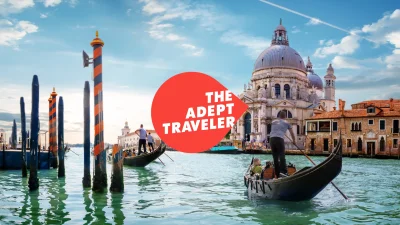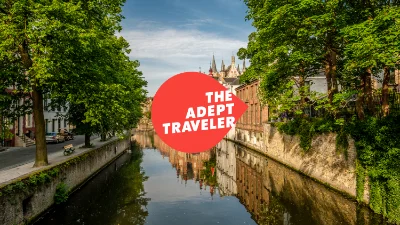Canal Cities
Canal cities offer a unique blend of historical significance, architectural beauty, and an abundance of cultural experiences. These cities are skillfully interwoven with waterways that have been meticulously crafted to serve as transport routes, commercial avenues, and cultural landmarks. When considering canal cities for travel, one might think of the likes of Venice, Amsterdam, or Bruges. Each offers visitors a distinctly picturesque impression, with canals that are as integral to the cities' identities as their more traditional roads and streets. A journey through the canal cities is essentially a voyage through time, giving you a glimpse into the lifelines that supported trade, mobility, and growth in these historic locales.
Canal cities owe much of their charm and allure to their enchanting waterways, which provide a scenic and memorable travel experience. Traveling by boat or gondola offers an entirely different perspective than exploring by car or on foot. As you glide along these charming waterways, you witness the intricate interplay of water and architecture, seeing centuries-old structures mirrored on the rippling surfaces. It’s an opportunity to appreciate the city’s secrets that may otherwise remain unnoticed from the confines of pedestrian paths. This distinctive mode of exploration is not just romantic but also immensely practical, as many canal networks are designed to connect prominent landmarks and neighborhoods efficiently.
The Architectural Heritage of Canal Cities
The architecture in canal cities is often a reflection of their historical and cultural evolution. The presence of water has influenced urban planning and development, leading to unique and innovative designs. Buildings in these cities are typically designed to withstand high moisture levels, with materials and foundations carefully selected to ensure durability. In cities like Venice, buildings seem to float atop the water, supported by a complex network of wooden piles driven deep into the seabed. Meanwhile, Amsterdam showcases a harmonious blend of classic Dutch architecture with its gabled facades and wharf-centric designs that cater specifically to its expansive canal network.
These cities often employ bridges as crucial linkages that bind communities, both practically and aesthetically. Each bridge tells its own story; in Florence, the Ponte Vecchio stands as a vibrant hub of artisanship and commerce, while the 17th-century arch bridges in Amsterdam blend seamlessly with the surrounding environment. As a result, the architecture of canal cities is not a separate entity from the water; rather, it's often a grand reflection, matched in beauty only by its own image captured in a watery mirror.
Culture and Lifestyle
Canal cities pulse with culture and offer a lifestyle that is distinctly their own. The atmosphere is invariably more relaxed, with a slower pace that complements the gentle flow of the waterways. Here, you can witness how life weaves naturally around the ebb and flow of the canals. From art galleries and museums housed in picturesque historic buildings to vibrant markets and cozy waterside cafes, canal cities have a unique ambiance that is both tranquil and invigorating.
This cultural tapestry is frequently enriched by festivals and events that celebrate the city’s history and connection to the canals. Venice, for instance, bursts into life during events like the Regata Storica and Carnival, when the waterways serve as both stadium and stage for grand celebrations. Such festivals provide travelers with an immersive experience that extends beyond the visual—embodying the very spirit and heartbeat of the canal cities.
Economics and Sustainability
Historically, canals were vital commercial routes that facilitated trade and economic development. Today, the function of these waterways continues to evolve, balancing historical preservation with modern needs. In many canal cities, there's a strong focus on sustainable tourism practices, recognizing both the cultural value and ecological fragility of the canal systems. Efforts are frequently made to preserve the quality of canal waters and manage the environmental impact of tourism.
Economic sustainability also comes with embracing innovation and diversification of economic activities while respecting heritage. In cities like Stockholm, the waterways serve as an extension of the city’s eco-friendly initiatives, integrating clean transport and promoting sustainable tourism. The presence of functional canals contributes not only to the aesthetic and cultural richness but also to the economic resilience of these urban environments.
Modern Challenges
Despite their beauty and historical significance, canal cities face unique modern challenges that require careful navigation. Climate change and rising sea levels pose significant threats to these water-centric communities. For cities like Venice, floods have become more frequent and severe, prompting discussions on sustainable urban planning and innovative engineering solutions, such as the MOSE Project designed to protect the city’s delicate environment.
Managing tourism is another concern, as many canal cities struggle with the influx of visitors eager to experience their water-lined streets. Efforts are underway in various cities to create more balanced tourism strategies, which focus on preserving the quality of life for residents while providing authentic experiences for visitors. These challenges require both local initiative and international cooperation to ensure that future generations can enjoy the splendor and hidden charms of canal cities.
Variety and Exploration
No two canal cities are the same, and each offers a distinct flavor and experience for the traveler willing to explore beyond the obvious. While classical destinations like Amsterdam or Venice are timelessly popular, intriguing alternatives beckon those eager to explore less-trodden waters. The ethereal beauty of Suzhou, known as the "Venice of the East," enchants with its classical Chinese gardens and intricate network of canals woven through urban landscapes. Alternatively, the bustling city of Bangkok provides a dynamic contrast with its lively khlongs bustling with daily life and commerce.
Every canal city comes with its own character, enriched by local customs, cuisine, and languages. Exploring these varied locales opens travelers to a spectrum of delightful experiences, from indulging in the sweet delicacies of Belgian Bruges to sipping a cappuccino along Milan's Navigli. It’s a form of travel that beckons curiosity, inviting a deeper aesthetic and sensory connection to each destination.
In essence, canal cities serve as gateways to understanding how history, culture, water, and modernity intersect. They challenge the conventional urban growth narrative by illustrating how societies can thrive alongside their natural surroundings. As travelers, we are not merely observers but participants in a journey through time and geography, guided by the quiet flow of the waters and the enduring legacy of those who first channeled their depths.
Canal Cities and Sustainability: Preserving Historic Waterways

Why Canal Cities Are Called “The Venice of” – But Should They Be “The Amsterdam of”?

Exploring the Historic Canal Cities: Amsterdam, Venice, and Beyond

